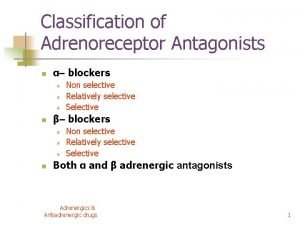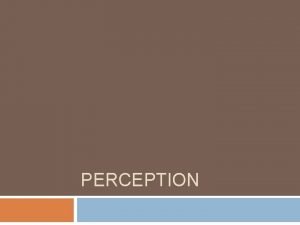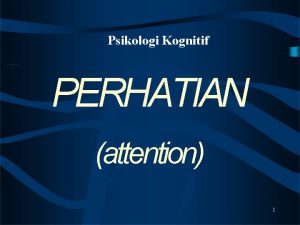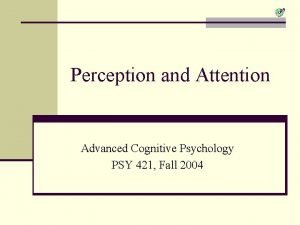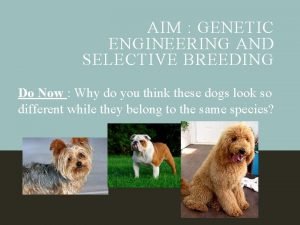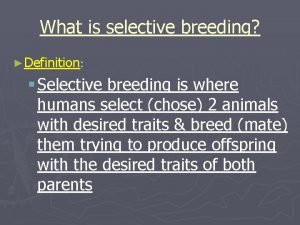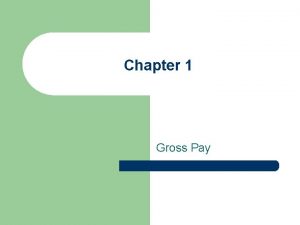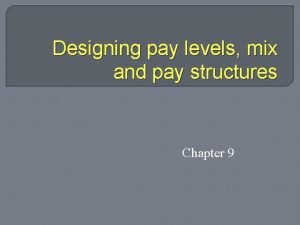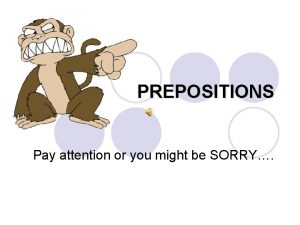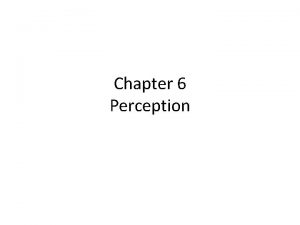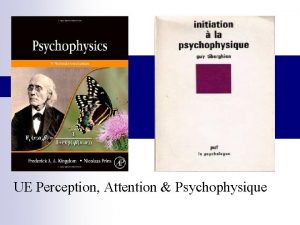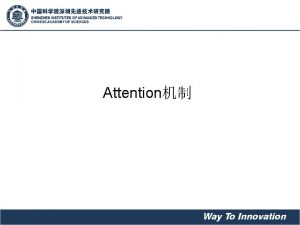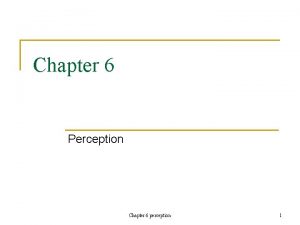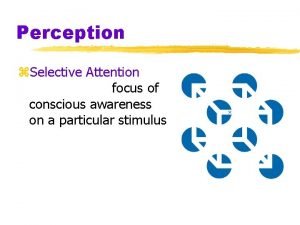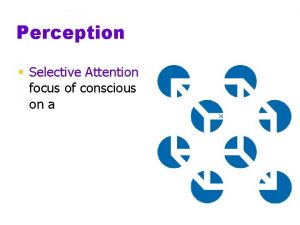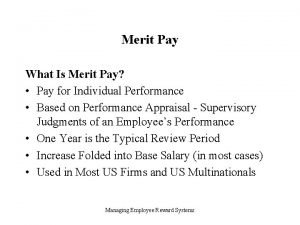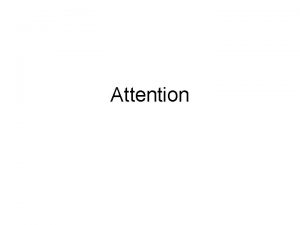Perception Selective Attention We pay attention to some
















- Slides: 16

Perception: Selective Attention ® We pay attention to some things and filter out others = selective attention The cocktail party effect ® Change blindness ® ® Our state of motivation plays a role in attention

Modes of Visual Processing ® What is ‘visual capture’? ® Bottom-up processing: brain assembles an image from all its parts ® Top-down processing: we recognize patterns as meaningful wholes rather than putting together all the pieces

Gestalt Perceptual Organization ® Gestalt = whole: movement began prior to WWI ® We perceive objects as well-organized patterns rather than component parts ® “The whole is greater than the sum of its parts” ® Based on the concept of grouping

We Impose Meaning On Stimuli ®

Gestalt Perceptual Organization ® Figure and Ground: the ability to distinguish between an object and its background

Gestalt Grouping Principles: Proximity

Gestalt Grouping Principles: Similarity ® The mind groups similar objects together

Gestalt Grouping Principles: Continuity

Gestalt Grouping Principles: Connectedness *When uniform and linked, we perceive objects as a single unit.

Gestalt Grouping Principles: Closure ® Our brains “fill in the gaps”

The Gestalt Approach ® Gestalt psychology – View that much of perception is shaped by innate factors built into the brain ® Figure – Part of a pattern that commands attention ® Ground – Part of a pattern that does not command attention; the background

The Gestalt Approach ® Subjective contours – Boundaries that are perceived but do not appear in the stimulus pattern Closure – Tendency to fill in gaps in figures and see incomplete figures as complete

The Gestalt Laws of Perceptual Grouping ® ® ® Similarity: we group things together that have similar look. Ex. Sports players in uniform. Proximity: we group things together that are near each other. Ex. “You are who you hang with. ” Continuity: we prefer smoothly connected and continuous figures to disjointed ones. Ex. Personality of people we’ve met before. Common fate: we group similar objects that share a common motion or destination. Ex. Birds Pragnanz: we patterns with the simplest organization. Ex. C#A#S#H

Depth perception ® Binocular clues: Information taken in by both eyes that aids in depth perception, including binocular convergence and retinal disparity. ® Retinal disparity arises from the difference in perspectives of the two eyes. Ex. Close one eye and look at your finger, then switch eyes.

Monocular cues: Information about depth that relies on the input of just one eye. ® Relative size: familiarity of the size of an object helps to determine distance. Ex. Two cars ® Light and shadow: objects that reflect the most light appear to be nearer than more dimly lit objects. Ex. Headlights reflect off the bumper in front of you, but the sides of the car farther up are dark. ® Interposition: closer objects will cut off our vision of more distant objects behind them. Ex. Your book on your desk covers the desk top. ®

Monocular cues: ® Relative motion: objects at different distances appear to move through your field of vision at a different rate. Ex. Power pole move by faster than fields while driving. ® Atmospheric perspective: haze or fog makes objects in the distance look fuzzy, less distinct, or invisible.
 Propranolol side effects
Propranolol side effects Selective perception
Selective perception Dear aunt jane experiment
Dear aunt jane experiment Contoh divided attention
Contoh divided attention Multimode theory of attention example
Multimode theory of attention example What are some disadvantages of selective breeding
What are some disadvantages of selective breeding Selective breeding definition science
Selective breeding definition science Chapter 1 gross income
Chapter 1 gross income How much does wanda earn per hour
How much does wanda earn per hour Designing pay structure
Designing pay structure Short term incentive
Short term incentive Preposition sorry
Preposition sorry Pay careful attention to your own work
Pay careful attention to your own work Family life stage
Family life stage Keep the soul alive
Keep the soul alive Pay attention to the following dialogue
Pay attention to the following dialogue You ____ pay attention in the class
You ____ pay attention in the class
